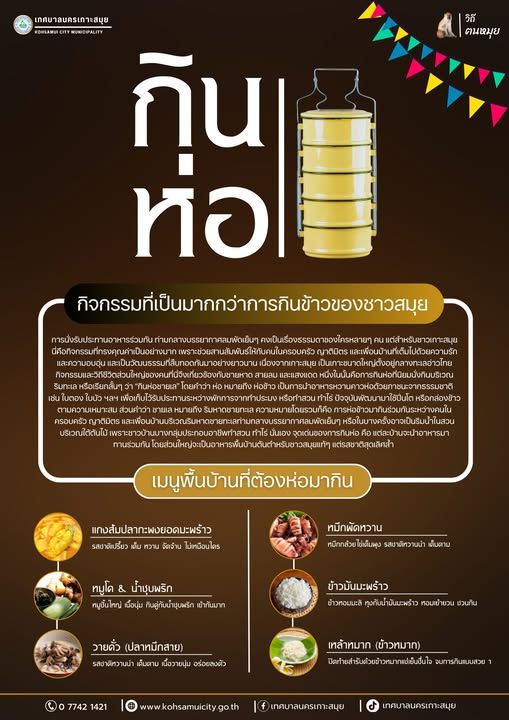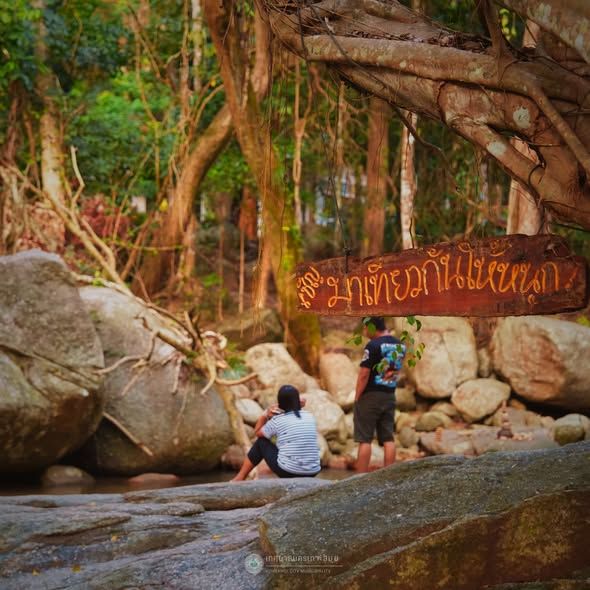Discover Kin Hor on Koh Samui, a beautiful tradition of sharing delicious local dishes from banana leaf parcels, bringing families and communities together. Efforts are underway to revive this heartwarming practice, preserving the island’s rich culinary heritage and communal spirit for new generations.
KohSamui #KinHor #ThaiFood #BananaLeaf #CulinaryTradition #IslandLife #FoodHeritage #TravelThailand #SamuiCulture #EatLocal #CommunityFood #AuthenticThailand
An Introduction to Kin Hor
Kin Hor, which translates as “eating from wrapped parcels,” is a cherished traditional food practice on the island of Koh Samui in Thailand. This unique style of local dining involves preparing food in neat parcels – often wrapped in banana leaves or packed in tiffin containers – and sharing these bundles among family, friends, and neighbors. Once a staple of community life, the Kin Hor tradition was integral in fostering bonds and creating a sense of togetherness among the island’s residents.
The Social and Cultural Significance
Kin Hor was much more than just a mealtime ritual. It served as a cornerstone for social interaction within villages and households. The act of sharing food parcels was an expression of warmth and affection, reinforcing social ties and mutual support. Every gathering, whether a family event, local festival, or community celebration, was an occasion for Kin Hor, making the practice synonymous with generosity and hospitality.
Preparation and Presentation of Kin Hor Meals
Traditionally, Kin Hor meals consist of rice paired with a variety of local side dishes and curries. The food is carefully portioned, wrapped in banana leaves, and sometimes placed in tiffin carriers (called “pinto” in Thai). This method preserves the food’s freshness, enhances flavors, and is environmentally friendly. Common dishes found in a Kin Hor set include spicy coconut curries, grilled fish, stir-fried vegetables, and homemade pickled fruits, all reflecting the island’s abundant natural resources.
The Role of Ingredients and Local Flavors
The cuisine of Koh Samui features an array of ingredients sourced directly from its rich coastal and tropical environment. Seafood plays a central role, with freshly caught fish, shrimp, and squid frequently appearing in Kin Hor parcels. Coconut, another staple, is used in curries, soups, and desserts, imparting a distinctively creamy and fragrant flavor profile unique to the region.
Community and Kin Hor Today
While modern dining habits and convenience foods have led to a decline in the daily practice of Kin Hor, the tradition is still remembered fondly by older generations. Community leaders and cultural advocates are now working to revive this heritage, often introducing Kin Hor activities during local festivals or educational events. These efforts aim to reconnect younger islanders with their culinary history and reinforce the spirit of sharing that defined Koh Samui’s communities.
Kin Hor in Contemporary Koh Samui
In recent years, the Kin Hor tradition has experienced a modest resurgence, particularly as people seek out authentic cultural experiences and sustainable food practices. Restaurants and community groups sometimes organize Kin Hor-style meals, inviting locals and visitors alike to partake in this communal way of eating. These experiences not only celebrate the flavors of Koh Samui but also strengthen the bonds of community, echoing the warm, inclusive spirit of the island’s past.
Frequently Asked Questions
Frequently Asked Questions about Kin Hor on Koh Samui
What is Kin Hor and why is it important to Koh Samui’s culture?
Kin Hor, meaning “eating from wrapped parcels,” is a traditional Koh Samui practice where local dishes are shared in banana leaf parcels or tiffin containers. It’s more than just a meal – it’s a way for families and communities to bond, express generosity, and preserve the island’s rich culinary heritage.
How are Kin Hor meals prepared and what types of food are included?
Kin Hor meals are made by carefully wrapping rice with a variety of side dishes – like spicy coconut curries, grilled fish, and pickled fruits – in banana leaves or packing them in tiffin carriers. The ingredients highlight Koh Samui’s natural resources, especially fresh seafood and coconut, offering a unique and flavorful dining experience.
Is the Kin Hor tradition still practiced today on Koh Samui?
Although daily Kin Hor gatherings have become less common due to modern lifestyles, there is a growing movement to revive this beloved tradition. Community events, festivals, and some restaurants now feature Kin Hor-style dining, helping to reconnect younger generations with their island roots and reinforce a communal spirit.




